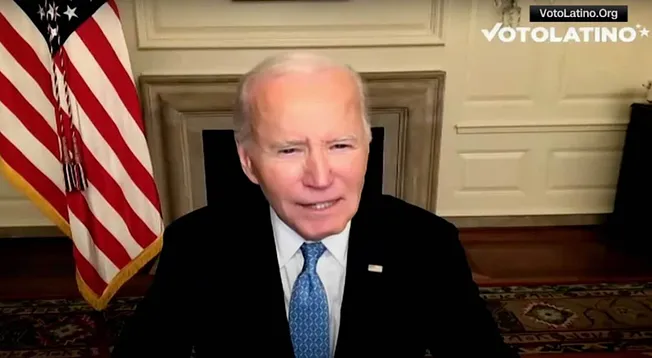When raw food influencer Zhanna Samsonova died in July at the age of 39, after reportedly eating only fruit for the past seven years, she was just the latest person to join a tragic club: anorexic influencers who have starved themselves to death in public. Other recent examples include Amy Ellis earlier this year, who had 140K followers on TikTok, and Josi Maria in 2020, who had 138K followers on Instagram. There was also Kylie Jaye, a so-called fitness guru who died a few weeks before her birthday, and Nikki Grahame, a reality TV star, who was found dead the following month in her London flat in April 2021.
The rate of mortality in this depressing segment of the influencer business is shocking, but inevitable. Anorexia—an illness that disproportionately affects girls and women—is often dismissed as a silly problem silly girls get from looking at too many photos of fashion models, but in fact it has the highest rate of mortality of any mental illness.
Eugenia Cooney, with 689K Instagram followers, is easily the best-known anorexia influencer today. In photos and videos taken by her mother, Cooney poses in costumes—Cowgirl Barbie, Hawaiian princess—that show her skeletal body to maximum effect. Inevitably, the skinnier she becomes, the greater reaction she receives on social media.
I suffered from anorexia in the ’90s, long before most social media influencers were born. Like most anorexics, I developed the illness in adolescence, and I was hospitalized nine times, for nearly three years in total. It took me 30 years before I felt I had enough perspective on my experience to write a book about it, and one of the most common questions I’ve been asked since it came out last spring is, “How do you think you’d have been affected by social media if it had been around when you were ill?”
Instagram didn’t exist then, but the fashion industry did. Kate Moss and her slivers of hip bones were widely blamed by politicians and the media for planting an unhealthy goal in so many girls’ heads. I remember hearing about this on the TV news during my first hospitalization and feeling completely mystified. I was 14 at that point and had never looked at a fashion magazine in my life; I hadn’t even heard of Kate Moss.
Growing up, I had heard of anorexia, as I loved listening to my parents’ Carpenters records as a kid, and I was dimly aware of the illness being the cause of Karen Carpenter’s death. Still, I was not trying to copy her any more than I was trying to look like a model. I simply had a fear of growing up and becoming a woman and I didn’t feel ready to separate from my mother. But in between hospital stays, when I was back home, I would fixate on the thin models in fashion magazines and in music videos on TV, because they seemed to validate my anorexic mindset: being perfect means being thin.
So, I can’t say Kate Moss staring blankly from a glossy magazine helped my perception of what a healthy woman looked like—just like the “thinspo” accounts on Instagram can’t be good for young girls today—but neither one even slightly accounts for the prevalence of anorexia. International rates of anorexia generally hold steady, although the number of American teen girls who were hospitalized for it doubled over the pandemic.
Instagram says it bans any account that “promotes, encourages, and glorifies eating disorders”—otherwise known as “pro-ana” accounts, as in “pro-anorexia.” But this is either ludicrously disingenuous or dangerously naive. Many anorexics deny they have anorexia. Since it’s a mental illness, a lack of self-awareness generally comes with the territory. So in late April, when Samsonova showed her 38.4K followers a plate of heartbreakingly tiny “plant-based dumplings with sunflower seeds pâte,” just four months before her death, she likely wasn’t consciously encouraging anorexia. Rather, she was, as she repeatedly wrote in her captions, promoting what she insisted was a healthy way of eating. The line between a “raw food influencer,” as she described herself, and an anorexic one is, well, painfully thin.
Vegetarianism and veganism are not eating disorders. They are, however, great ways to exclude major food groups in a socially permissible way. Like many anorexics, I was first a vegetarian, and I look back on that now as a gateway drug to the disorder. It taught me from a young age to divide foods between those that were permissible and those that weren’t. Rather than seeing eating as a pleasure, it became an identity, and a moralistic one: was I a good person who conscientiously ate good foods? Or a slovenly one who unthinkingly ate bad ones?
Cooney clearly wants people to see how thin she is, although her supporters insist she isn’t encouraging others to look like her. “She is not endorsing a way of life, she is just showing hers,” is a typical comment. Josi Maria was more typical of today’s anorexia influencer, in that she claimed she wasn’t showing off how thin she was; rather, she was “charting her recovery”—a recovery that required her to post regular photos of her wasted body in a bikini or workout clothes. My guess is that these women, like a lot of anorexics, have dual awareness, both that they are thin and proud of it, and that they still want to be thinner. When I was at my worst, I took photos of myself naked in front of a mirror with my disposable camera—the analog version of a selfie. I didn’t show my photos to other people; they were just my private trophies. This secretive, more furtive way of glorying in one’s illness is very common among anorexics. It’s just that the ones who show their bodies—like Cooney—are more visible.
When people talk about Instagram accounts that fetishize anorexia, they tend to focus on the anorexic herself. Look at how thin she is, and look at how she’s encouraging others to be sick, they huff, as though one can reasonably attribute malice or even motivation to someone so ill.
But it’s the followers who are more culpable, the people who sign up to watch these young women sicken and die right in front of them. For a lot of people, there is something thrilling in watching a woman waste away, maybe because it seems like the ultimate expression of female self-denial, a feminine helplessness, a sexless kind of self-published pornography.
Female starvation as spectacle has a very long history. Women in the early to late Middle Ages who starved themselves were later worshipped as saints, such as Wilgefortis (meaning strong virgin), Rose of Lima, Orsola Giuliani (known as Saint Veronica Giuliani), and probably most famously, Catherine of Siena. Almost all of these young women stopped eating when their parents were arranging their marriages. Catherine of Siena’s parents were hoping she might marry the widower of Catherine’s adored older sister, who died in childbirth. Catherine was less than thrilled at this idea and starved herself until any thoughts of marriage were moot. After she died in 1380 at the age of 33, her worshippers left offerings of food at her shrine. Even in death people were still nagging her to eat something.
The self-denial of Catherine—and the others—was seen as akin to holiness. While it’s tricky to compare eighth- to fifteenth-century women with twenty-first-century ones, the phenomenon of girls and women starving themselves has existed for millennia. And even if Catherine of Siena and Zhanna Samsonova were not classified as suffering from the same syndrome, they both learned that a woman not eating is an effective way for her to seize control when she feels otherwise powerless. All the saints listed above stopped eating at the time their parents were urging them to get married. I paused time by starving and arresting my puberty.
Anorexia gave me nothing. All it did was take away my teens and twenties. But for the medieval girls, it gave them enormous power. Like today’s anorexia influencers, these once-anonymous girls accrued followers, clout, and fame. Today’s influencers go one step further—seizing control of their image on social media, ensuring that they are entirely defined by their skinniness, frozen forever in their photos as young, sick, and popular.
I left the hospital for the last time in 1995, when I was 16 years old. I had spent almost three years in psychiatric institutions where my every bite was monitored. Then—save for two therapy appointments a week—I was on my own. I rejoined the education system and, at my therapist’s wise suggestion, went to a new school where no one knew me. I told no one that I’d been in the hospital, because I no longer wanted to be locked into that identity, with people always watching what I ate. I even changed my name. I was given a chance to start over, and it saved me.
What hope is there for anorexic influencers, whose past is always on the internet, and who know their appeal depends on them being ill? There have always been, and sadly, probably always will be girls and women suffering from anorexia. The truly sad part is that they now attract millions of followers.
Hadley Freeman is the author of Good Girls: A Story and Study of Anorexia. Follow her on X (formerly Twitter) @HadleyFreeman.
And for more cultural commentary, became a Free Press subscriber today:











our Comments
Use common sense here: disagree, debate, but don't be a .